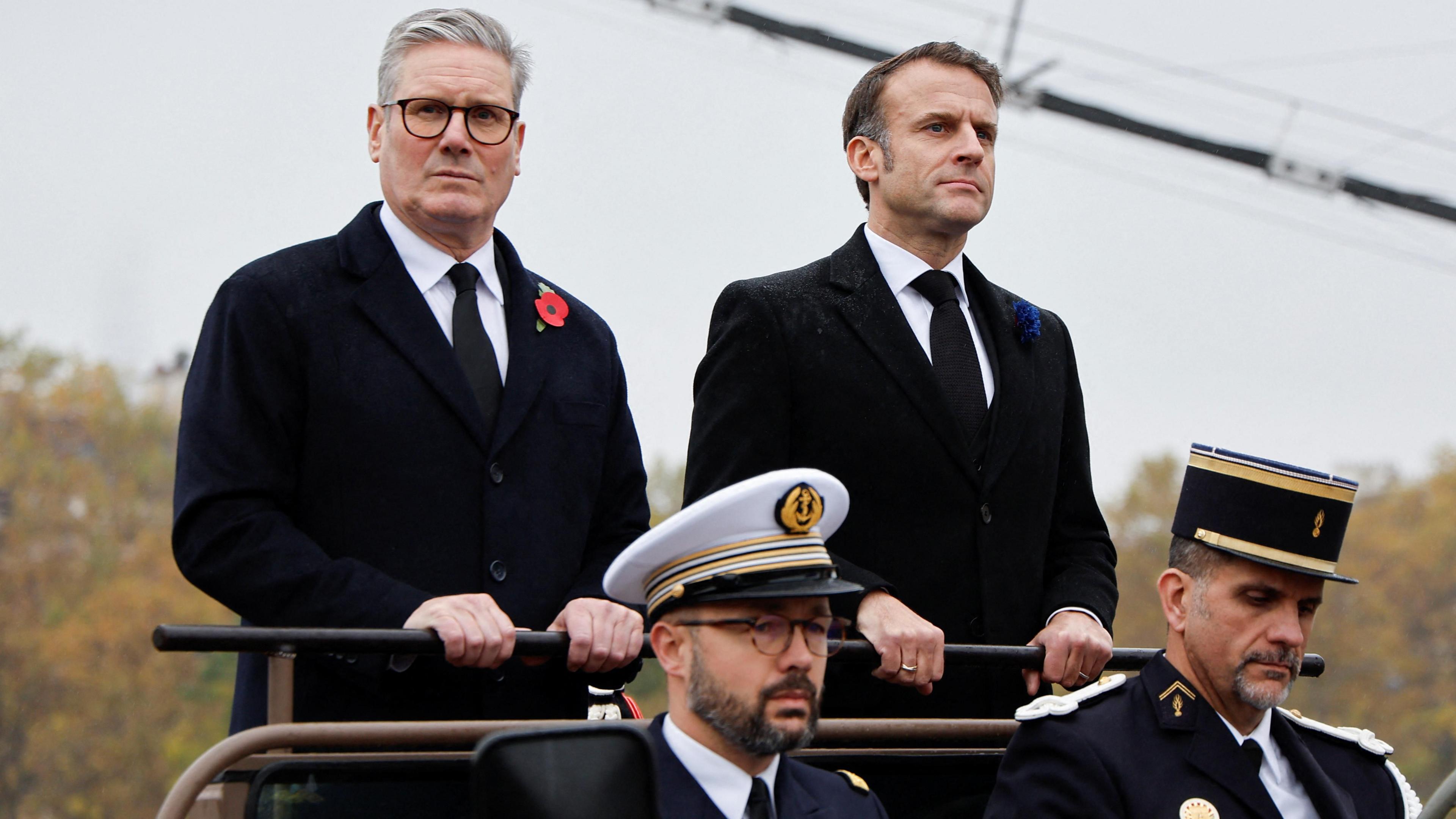Europe marks Armistice Day with two-minute silence
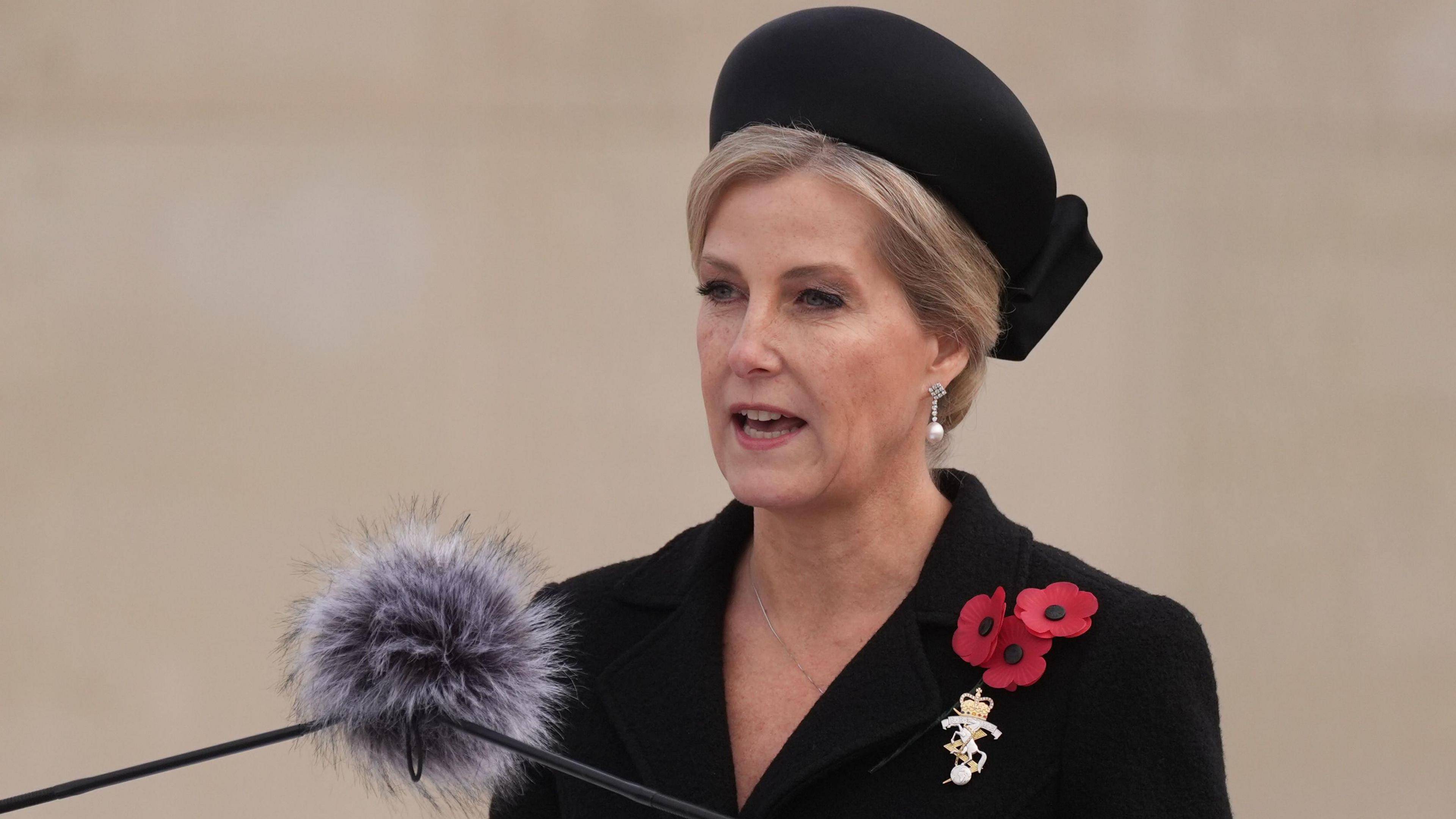
Sophie, Duchess of Edinburgh, led the service at the National Memorial Arboretum in Staffordshire
- Published
Armistice Day has been marked with two minutes of silence across the UK and in Europe.
Prime Minister Sir Keir Starmer joined an event in Paris, while Sophie, the Duchess of Edinburgh led the ceremony at the National Memorial Arboretum in Staffordshire.
Sir Keir and the French president laid a wreath at the Tomb of the Unknown Soldier at the Arc de Triomphe in the French capital.
Across the UK, the traditional two-minute silence at 11:00 on 11 November was observed. It marks the time and date when the World War One armistice came into effect.
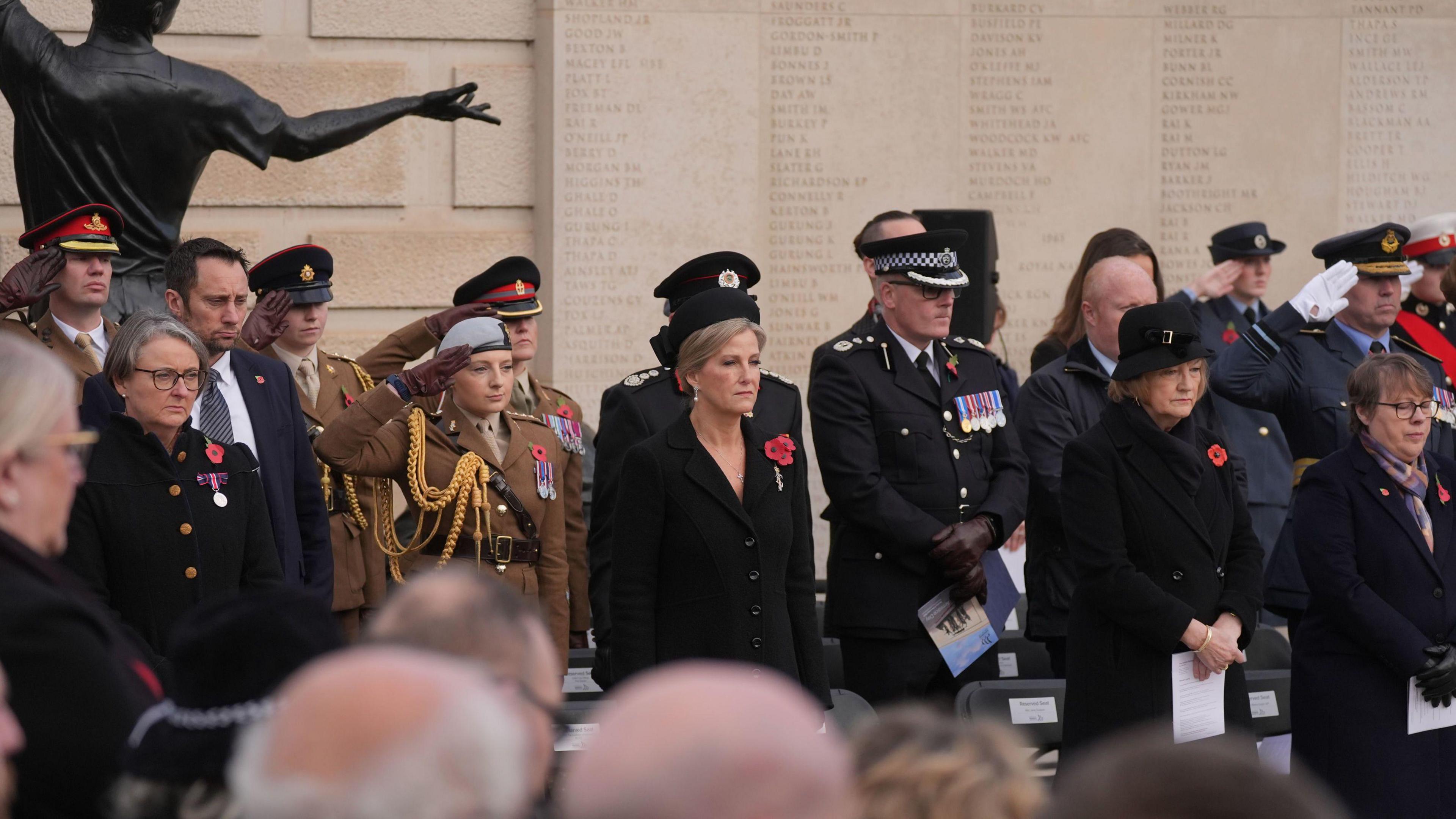

Sir Keir Starmer (centre), the British PM, stands with his French counterpart Michel Barnier and France's President Emmanuel Macron (right) in Paris
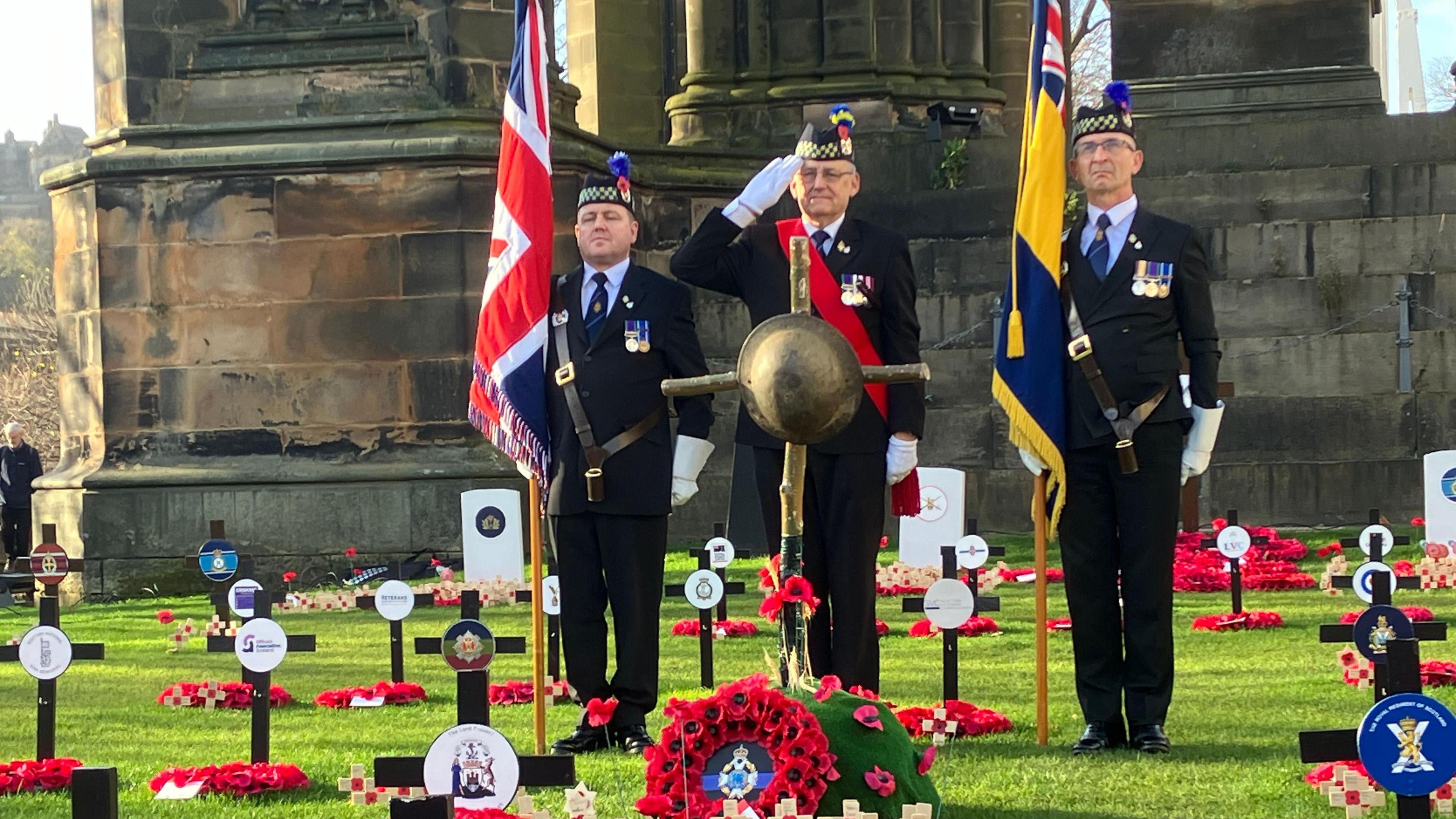
Men at the service in Edinburgh's Garden of Remembrance
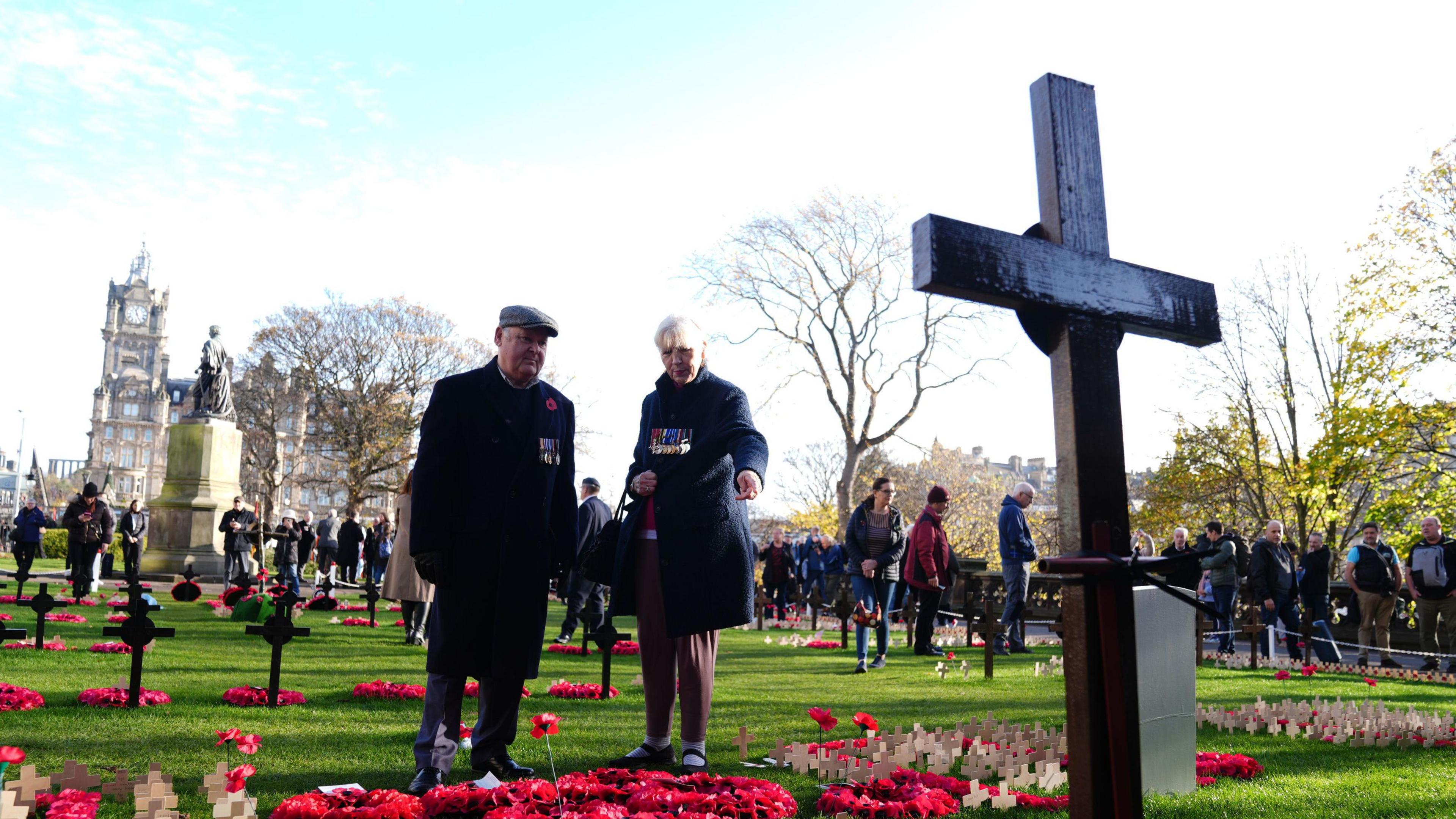
People looking at wreaths in Edinburgh's Remembrance garden
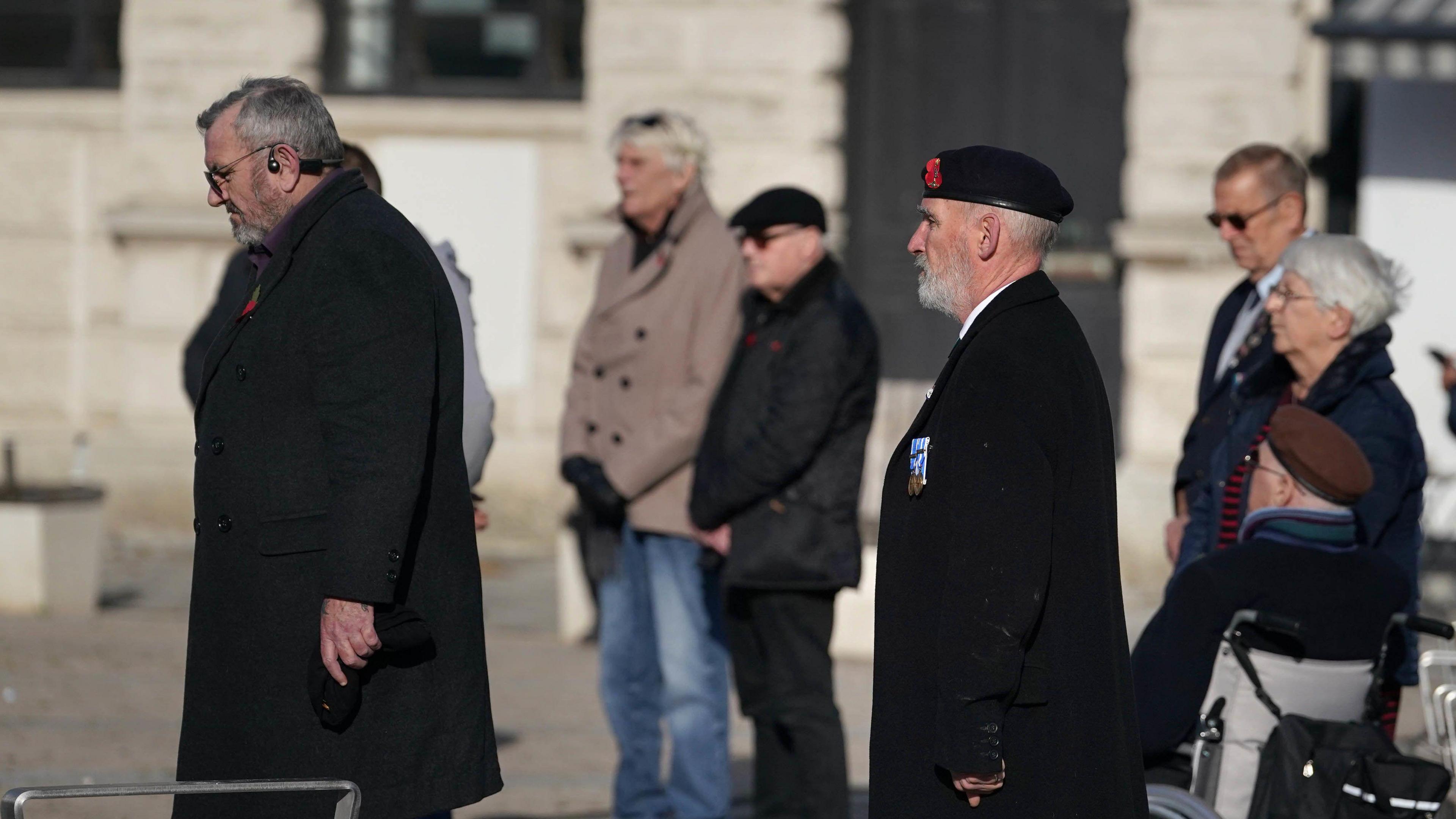
There was a gathering in Market Square in Dover to mark Armistice Day
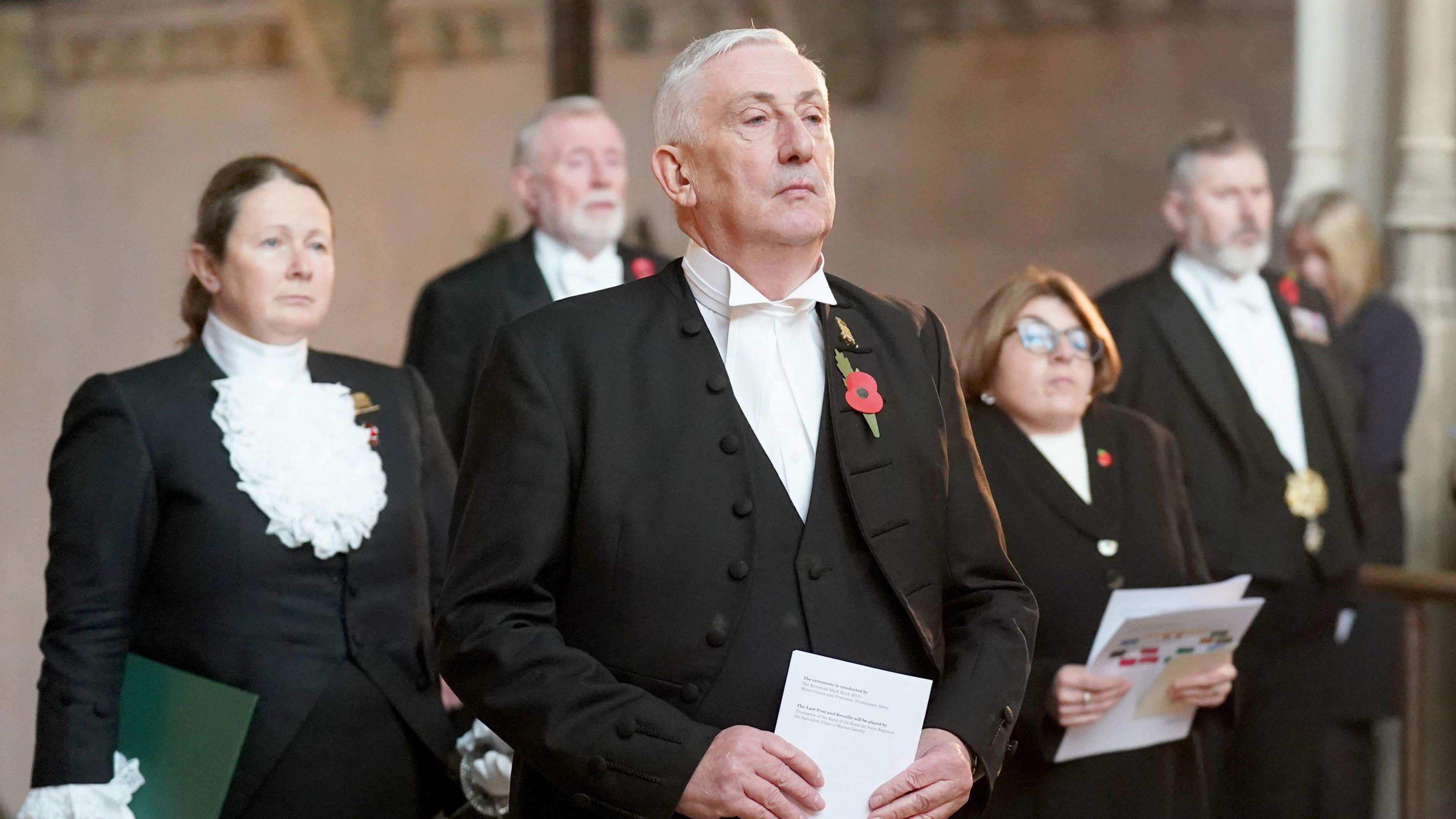
Speaker of the House of Commons Sir Lindsay Hoyle at a service in Westminster Hall, London
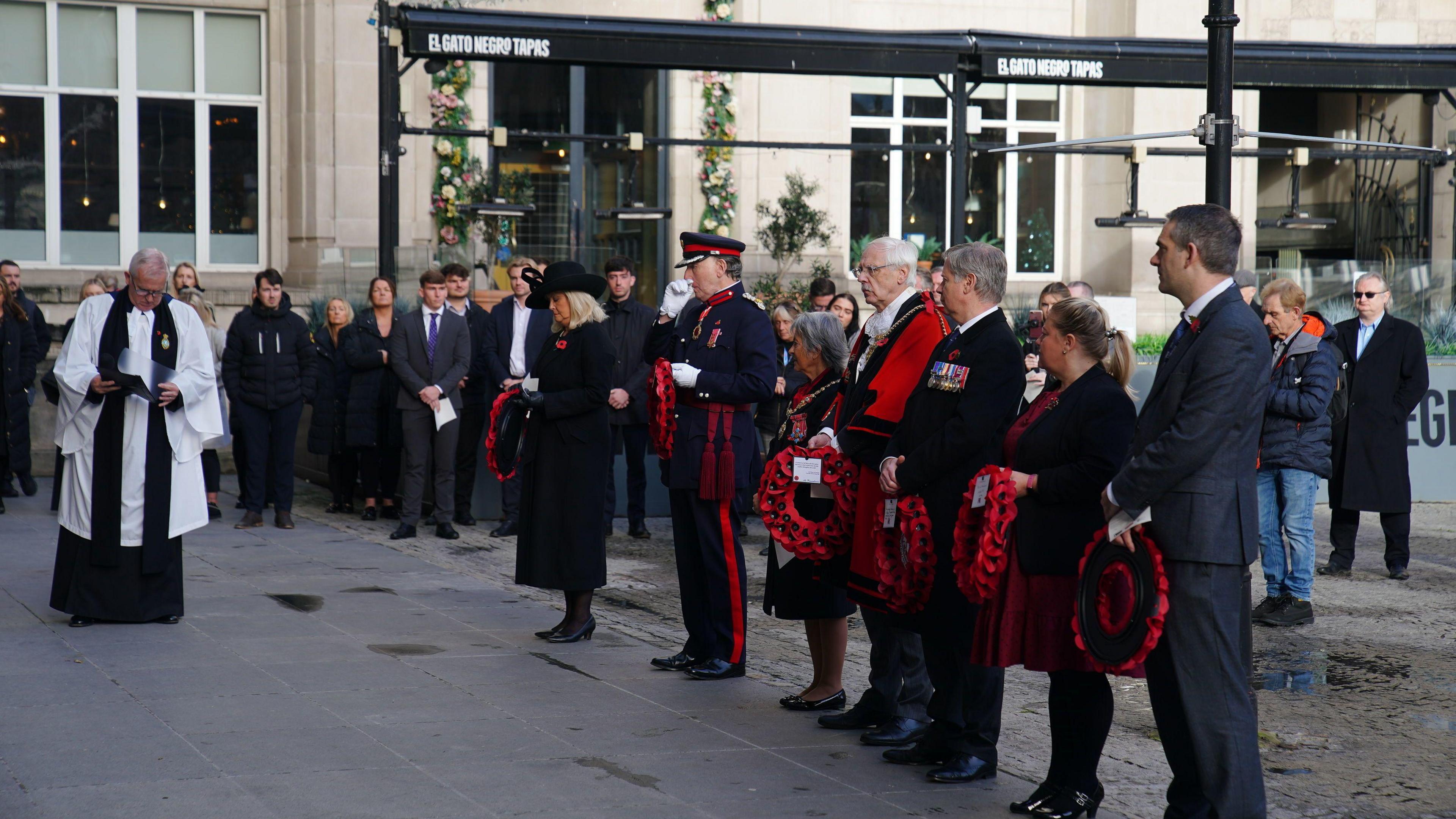
A service at the Exchange Flags building in Liverpool
Just before the silence was observed at the National Memorial Aboretum, the duchess read an extract from the 1914 poem For the Fallen, written by Laurence Binyon. It included the famous passage "age shall not weary them, nor the years condemn; at the going down of the sun and in the morning, we will remember them".
She and defence minister Maria Eagle then laid poppy wreaths at the site's armed forces memorial.
While the Armistice Day tradition began as a way of commemorating those killed in World War One, it is now used to remember all the people killed in wars since then.
As well as the event in Staffordshire, events taking place across the UK included ones at Bristol, Cambridge, Nottingham, Liverpool, and Dover.
And at Glasgow Central Station, rail travellers and staff paused to watch as a piper led a procession of veterans through the concourse.
An event was also held at Westminster, attended by Commons Speaker Sir Lindsay Hoyle.
In Wales, Carmarthenshire County Council said it would illuminate County Hall on Armistice Day evening to "reflect and remember the sacrifices of our armed forces, and all those whose lives have been lost in conflict and acts of terror".
Over the weekend, Remembrance Sunday events were held across the UK as is traditional every year on the Sunday closest to 11 November.
King Charles led the nation in two minutes of silence in remembrance of men and women who lost their lives serving in the two world wars or other conflicts.
In Belfast, a protest banner was erected outside the office of Northern Ireland First Minister Michelle O'Neill following her decision to take part in the city's Remembrance Day service on Sunday.
She was the first senior Sinn Féin figure to do so and the banner that was later attached to the shutters of her office in Cookstown, County Tyrone, featured the word "traitors" alongside bloody handprints and a poppy.
Asked about the banner, O'Neill said it was "difficult" to hear criticism about her decision to attend the commemoration but she was "committed to being a first minister for all".
She added that she was unable to attend an Armistice Day event at Stormont later on Monday, but that other Sinn Féin politicians would take part.
Related topics
- Published11 November 2024
